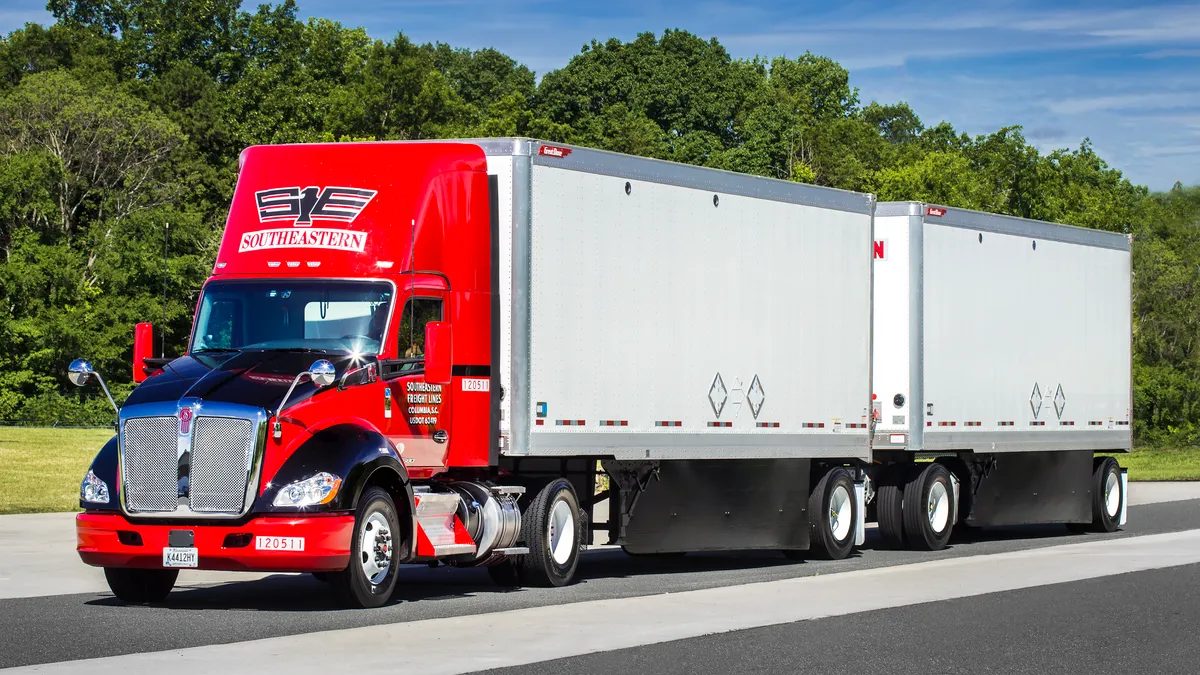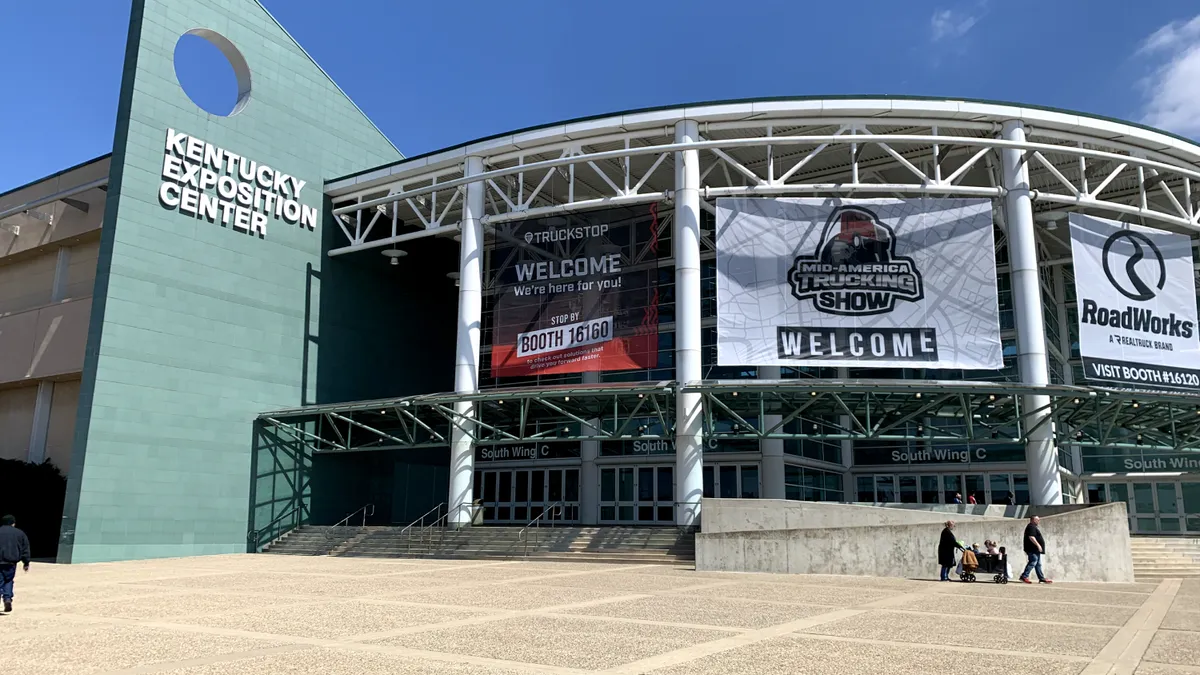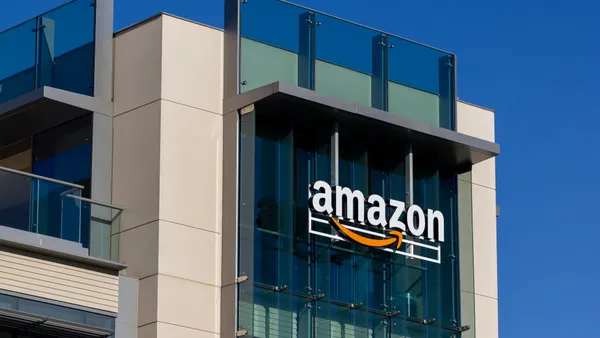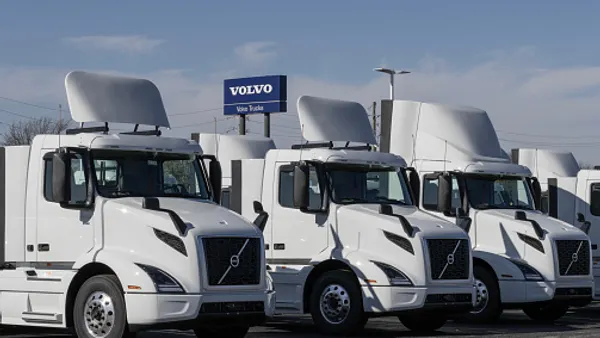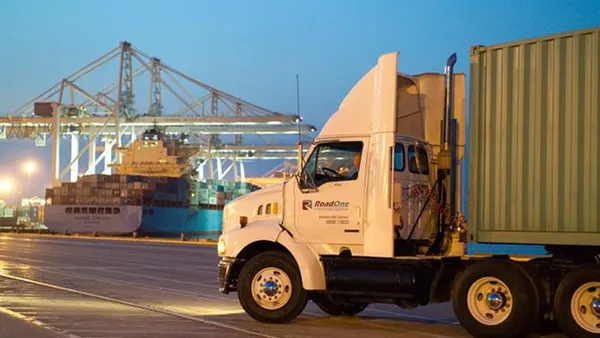Dive Brief:
- The growth rate in dry van spot rates reached a new high, at 59% YoY for the week ended Friday, according to the latest freight report from R.W. Baird and Co. A demand for trucks drove the rates, as Truckstop.com's Market Demand Index grew 281% YoY for the same week.
- Supply of available Class 8 trucks is constrained, Baird reported, despite a 142% increase, YoY, in September orders of Class 8 tractors. Fleets are making more orders for trucks to catch up to ready for growing freight demand, but production slowdowns from COVID-19 will stall the process of replenishing fleets. And in Q4, factories will again slow to retool and to allow time off for holidays, Baird reported.
- Numerous reasons exist for the elevated spot rates, including more freight coming through the supply chain than expected, caused by consistent consumer demand and a desire of retailers to grow inventories and prevent stockouts. Contract carriers are rejecting 25% of electronically tendered freight, pushing more loads onto the spot market, said Brent Hutto, chief relationship officer for Truckstop.com.
Dive Insight:
There have been concerns in recent months that a lack of new fiscal stimulus could "topple demand improvement" that has occurred steadily since the TL spot market hit a bottom in the spring, according to Benjamin Hartford, Baird senior equity research analyst for transportation and logistics. The Federal Reserve meets this week to discuss further economic assistance, as cases of coronavirus rise, according to the Associated Press.
"The Fed is going to be very worried about the risk of a double-dip recession given the lack of further support by Congress," Diane Swonk, chief economist at auditing firm Grant Thornton, told the Associated Press.
But even though further federal relief may not arrive until 2021, the freight market is going gangbusters.
"[Spot] rates have been astronomically high for eight weeks," said Hutto. "It seems to be cruising along at $2.45 [per mile] to $2.41."
Hutto said such rates are very profitable, calling them "new truck money," or enough profit to be able to buy more trucks. A year ago, Truckstop.com had rates of about $1.98 per mile, and those were good rates during a good freight year, Hutto said. But what has happened now is a tightening of capacity based on fewer trucks for more loads.
Truckstop.com, which offers spot TL rates, usually hosts 400,000 offers a day. Presently, the loads have more than doubled to 830,000 per day, driven by consumer purchasing, Hutto said.
That purchasing steadily depleted inventories all summer. The inventory trend has been keeping fleets busy for weeks. On Oct. 28, UPS reported its Freight segment saw its profit rise 18% YoY, driven partially by inventory replenishment.
Much of that consumer freight is being offered in TL contract marketplace, but although rates and capacity are negotiated, trucks are not guaranteed, Hutto said. Rejected spillover heads to the spot market, he said.
Hutto said he didn't think he would see another freight boom like that of 2017-2018, when the spot market hit a 40-year high. There was a prolonged capacity constraint then, too. Now Hutto sees it happening again, and he expects the spot boom to continue at least into Q1 2021.


